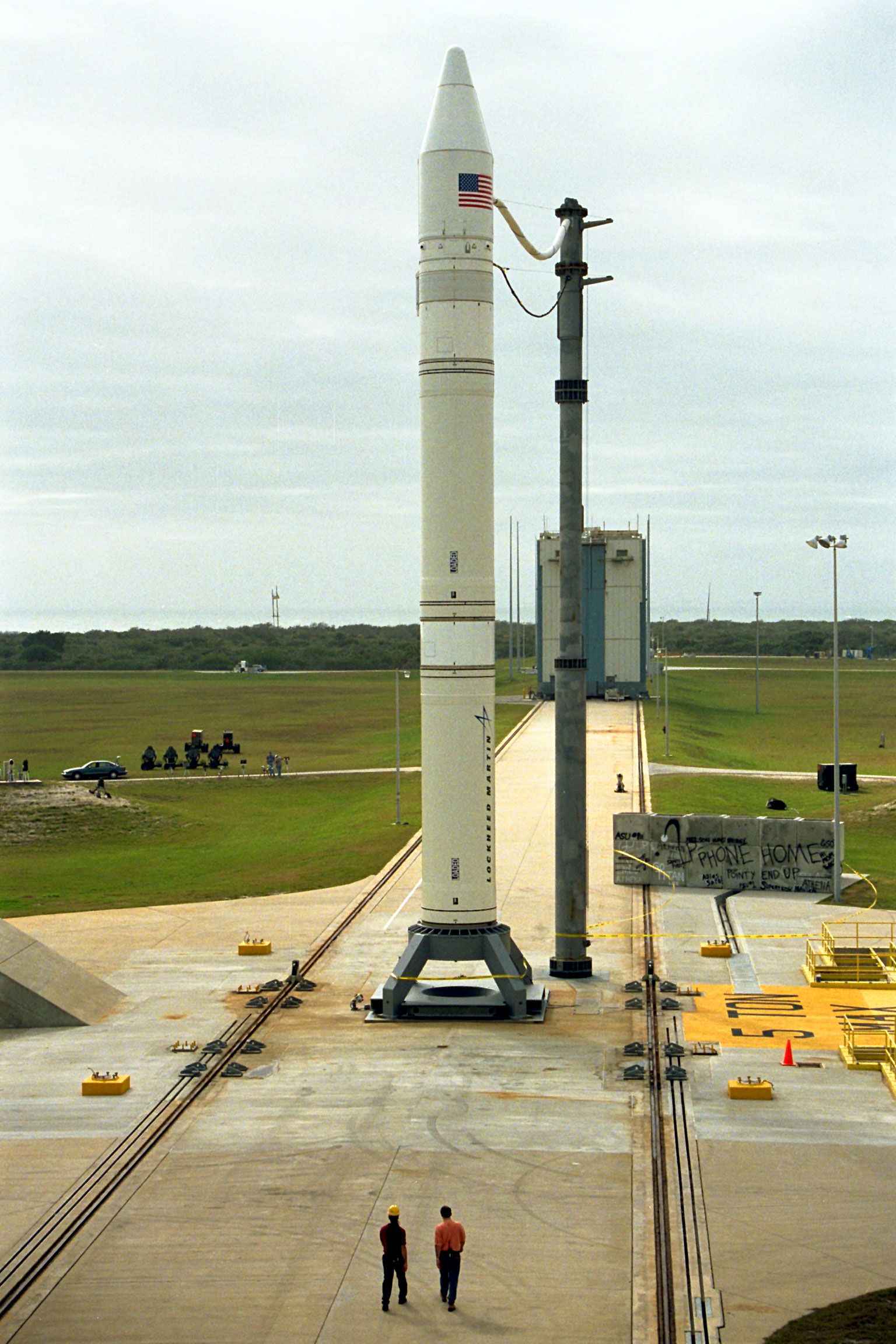
Athena II
In-activeLockheed Martin (LMT)
Jan. 7, 1998
Description
The Athena II is an American small expendable launch system which was used for three launches between 1998 and 1999.
Specifications
-
Stages
4 -
Length
28.2 m -
Diameter
2.36 m -
Fairing Diameter
2.36 m -
Launch Mass
120.0 T -
Thrust
1900.0 kN
Family
-
Name
Athena II -
Family
― -
Variant
II -
Alias
― -
Full Name
Athena II
Payload Capacity
-
Launch Cost
― -
Low Earth Orbit
2065.0 kg -
Geostationary Transfer
Orbit
593.0 kg -
Direct Geostationary
― -
Sun-Synchronous Capacity
1165.0 kg
Lockheed Martin
Commercial
None
LMT 1953Lockheed Martin's Space Division started in the production of missiles and later ICBM's in the 1950s. Their TITAN missile system was used for 12 Gemini spacecraft and the Voyager probes. They have worked largely in collaboration with NASA on many of their probes, landers, and spacecraft, and hope to play a key role in NASA's return to the moon in 2024.
Athena II | Ikonos
Lockheed Martin | United States of AmericaVandenberg SFB, CA, USA
Sept. 24, 1999, 6:21 p.m.
Status: Launch Successful
Mission:
Lockheed Martin Commercial Space Systems, an operating unit of Missiles & Space, has revolutionized the space-based imagery market with the development of the first commercial satellite capable of resolving objects on the ground as small as one meter in diameter. The company is providing a spacecraft, designated IKONOS 1, for Space Imaging, Thornton, CO, which offers high-resolution imagery of the Earth to customers around the world.
Polar OrbitAthena II | Ikonos 1
Lockheed Martin | United States of AmericaVandenberg SFB, CA, USA
April 27, 1999, 6:22 p.m.
Athena II | Lunar Prospector
Lockheed Martin | United States of AmericaCape Canaveral SFS, FL, USA
Jan. 7, 1998, 2:28 a.m.
H3-22
Michibiki 5 (QZS-5)
Yoshinobu Launch Complex LP-2 - Tanegashima Space Center, JapanQZSS (Quasi Zenith Satellite System) is a Japanese satellite navigation system operating from inclined, elliptical geosynchronous orbits to achieve o…
Electron
The Wisdom God Guides (iQPS Launch 6)
Rocket Lab Launch Complex 1B - Rocket Lab Launch Complex 1, Mahia Peninsula, New ZealandSynthetic aperture radar Earth observation satellite for Japanese Earth imaging company iQPS.
New Shepard
NS-37
West Texas Suborbital Launch Site/ Corn Ranch - Corn Ranch, Van Horn, TX, USANS-37 is the 16th crewed flight for the New Shepard program and the 37th in the New Shepard program's history.
Long March 5
TJSW-23
101 - Wenchang Space Launch Site, People's Republic of ChinaChinese classified satellite claimed to be for communication technology test purposes. Actual mission not known.
Electron
Don't Be Such A Square (STP-S30)
Rocket Lab Launch Complex 2 (Launch Area 0 C) - Wallops Flight Facility, Virginia, USASTP-S30 is a complex mission that will deliver research experiments and technology demonstrations to orbit for the DoD and contribute to future space…

